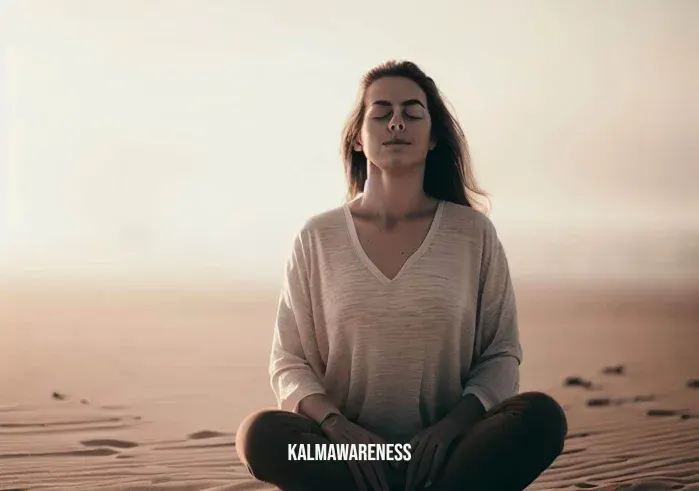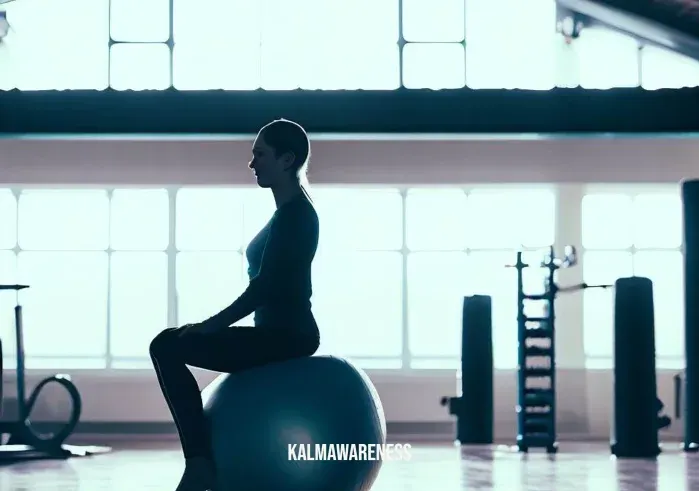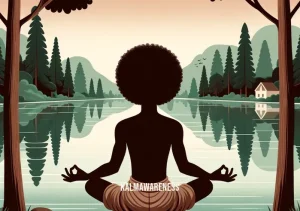Find Your Breath: The Ultimate Guide to Mindfulness and Meditation
In this busy and fast-paced world, we often forget the importance of something as basic and crucial as our breath. The ancient practice of mindfulness, at its core, focuses on bringing one’s attention back to the present moment by focusing on the breath. To ‘find your breath’ is a fundamental tenet in various techniques used to cultivate mindfulness, relaxation, focus, and awareness. So, let’s dive into the art of finding your breath and the transformative power it holds.
Recognizing the Power of the Breath
Finding your breath isn’t merely about observing the inhalations and exhalations; it’s about understanding and harnessing the power that lies within this simple act. When we intentionally observe our breathing, we open the doorway to a calmer and more mindful existence.
Breathing can be seen as a bridge between our physical and mental world. It’s an autonomic process that can also be consciously controlled. This duality makes it an excellent focal point to draw our attention back from distracting thoughts and ground ourselves in the present moment.
“Just as a mirror reflects our outer appearance, the breath reflects our inner state. It’s our constant companion from birth to death.”
Practicing mindfulness through breathing can even help us better appreciate the world around us and allows us to be fully conscious of our thoughts and emotions, thereby promoting a healthier and more balanced lifestyle.
The Role of Breath in Mindfulness and Meditation
Mindfulness is an integral part of many meditation practices. At the heart of mindfulness is the act of becoming aware through the senses – in this case, the physical sensation of breathing. To truly sense and be aware, it’s necessary to bring our focus back to the breath, again and again, gently guiding the mind away from distractions.
- Mindful Breathing: This practice involves simply noticing your breath. It could be the feel of the air entering and leaving your nostrils, or the rise and fall of your chest or abdomen as you breathe. If your mind wanders, as it invariably will, gently steer it back to your breath.
- Diaphragmatic Breathing: Also known as belly breathing, this technique promotes full oxygen exchange and can slow the heartbeat and lower or stabilize blood pressure. As you inhale, the diaphragm moves downward, and your belly expands. As you exhale, your belly contracts.
- Box Breathing: This technique, also known as four-square breathing, involves inhaling, holding your breath, exhaling, and holding your breath again, each for a count of four. It’s used by Navy SEALs to stay calm and focused in stressful situations.
- 4-7-8 Breathing: In this technique, you inhale for a count of 4, hold your breath for 7, and exhale for 8. This method is particularly good for reducing anxiety and helping individuals fall asleep.
Meditation practices like active pauses, 3-minute breathing space, or even the unique practice of aphantasia meditation all utilize the power of breath to induce a state of calm and heightened awareness.
Breathing Techniques to Help Find Your Breath
Practicing specific breathing techniques can not only help you ‘find your breath’ but also provide profound health benefits. Regular practice can help to reduce stress, regulate emotions, improve concentration, and promote better sleep.
Box Breathing
Box breathing, or four-square breathing, is a powerful stress reliever. This technique can heighten performance and concentration while also being a potent tool to regain calm and control of your thoughts when under stress.
- Step 1: Slowly exhale through your mouth, getting all the oxygen out of your lungs.
- Step 2: Slowly breathe in through your nose for four slow counts.
- Step 3: Hold your breath for another slow count of four.
- Step 4: Exhale through your mouth for the same slow count of four, expelling all the air from your lungs and belly.
- Step 5: Hold your breath again for the same slow count of four.
Repeat these steps for a few minutes or until you feel calm and centered.
Next Steps
Mastering the art of finding your breath is a journey, not a destination. By incorporating these techniques into your daily routine, you can begin to harness the transformative power of your breath.
As we conclude this part of the article, I invite you to continue reading the next part, where we’ll explore how to integrate mindful breathing into your daily routine, the scientific benefits of finding your breath, and much more.
Are you ready to dive deeper and unlock the power of your breath? Continue to the next part and discover the world that awaits you as you find your breath.

The Science and Benefits of Mindful Breathing
Mindfulness has been gaining traction in the West over the past few decades, attracting interest from medical and mental health professionals alike. Scientific research is increasingly substantiating the claims of the myriad benefits mindfulness offers, specifically mindfulness of breath, often referred to as ‘finding your breath’. In this chapter, we will delve deeper into the physiological and psychological mechanisms that underlie the effectiveness of breath-focused mindfulness practices.
How Mindful Breathing Impacts the Brain and Body
The phrase ‘find your breath’ is a core instruction in mindfulness practices. By consciously directing our attention to the sensations of inhalation and exhalation, we engage our senses in the present moment. This process activates the parasympathetic nervous system, which is responsible for our body’s ‘rest and digest’ response.
In contrast, the everyday stressors of modern life often keep us in a state of constant alert, or ‘fight or flight’, controlled by the sympathetic nervous system. By choosing to focus on our breath, we send a signal to our brain to switch to the parasympathetic mode, thus enabling relaxation and recovery.
This intentional shift to parasympathetic activation helps in the regulation of cortisol, the body’s primary stress hormone. Elevated cortisol levels can lead to a slew of health problems, including anxiety, depression, heart disease, memory and concentration issues, and weight gain. Therefore, practices that aid us in finding our breath can offer us a powerful tool for stress management and overall health.
Mindful Breathing and Emotional Regulation
Finding your breath is more than just a tool for physical relaxation; it is also a means of emotional regulation. When we become aware of our breathing, we also become aware of our current emotional state. Is your breath shallow and quick, or deep and slow? Your breathing pattern often mirrors your emotional state.
Observing our breath without judgement allows us to step back from our emotions, reducing their intensity and providing us a moment of pause before we react. This enhanced emotional awareness can improve our relationships, decision-making abilities, and overall emotional well-being.
Mindful Breathing for Improved Cognitive Function
On the cognitive front, engaging in practices that help us find our breath can lead to improvements in focus, attention, and cognitive flexibility. Studies have shown that mindfulness of breath can enhance executive functions, primarily due to the involvement of the prefrontal cortex – a part of our brain responsible for these higher-order functions.
By repeatedly bringing our attention back to our breath whenever we notice our mind has wandered, we are effectively exercising our ‘attention muscle.’ Over time, this can lead to increased concentration, better impulse control, and a greater capacity to think before we act.
Integrating Breath-Awareness Practices into Your Everyday Life
Recognizing the benefits of finding your breath, the next step is integrating this practice into your daily routine. It doesn’t have to be a grand endeavor – even a few minutes a day can make a difference. Whether it’s during a mindful walk, while eating, or simply during a quiet moment, bringing attention to your breath can be a calming and centering practice.
Conclusion
While we’ve covered quite a bit about the power of mindful breathing, there is still so much more to discover and learn. By adopting these practices and continuing to explore, we can unlock greater levels of inner peace, emotional balance, and cognitive sharpness.
As we find our breath, we find ourselves – aware, present, and fully engaged in the dance of life.
Continue with us on this journey. In the next chapter, we will delve into a range of mindful breathing exercises that you can try out for yourself. Join us and continue to find your breath, exploring the profound and transformative impact it can have on your life.
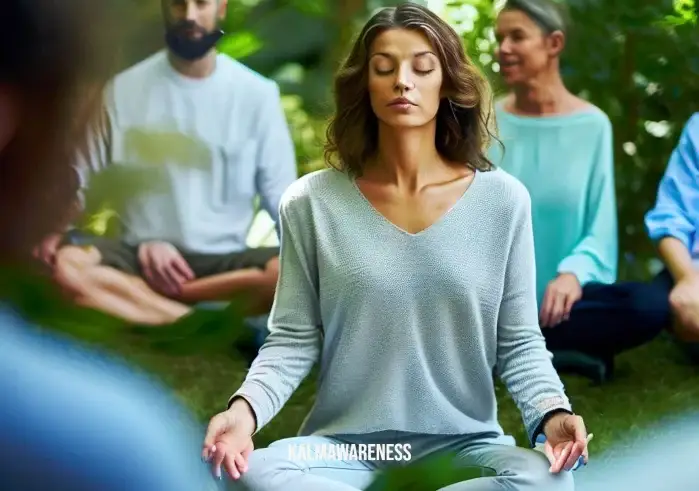
Breathing Techniques to Find Your Breath and Cultivate Mindfulness
Learning to “find your breath” can be a transformative practice, one that invites serenity into your life while offering numerous physiological and psychological benefits. This chapter will delve into various techniques to aid you in this journey. By learning these methods, you can cultivate an effective mindfulness practice, tailoring it to your unique needs and circumstances.
Box Breathing: Regulating the Body and Mind
Box breathing, also known as square breathing, is a powerful technique for activating the parasympathetic nervous system and creating a sense of calm. This simple practice, involving inhaling, holding the breath, exhaling, and pausing again, all for equal counts, can also improve focus and performance. Here is a detailed guide on how to incorporate box breathing into your routine to find your breath.
Diaphragmatic Breathing: The Powerhouse of Respiration
Also known as belly breathing or deep breathing, diaphragmatic breathing is a technique that can significantly aid in stress relief and emotional regulation. By teaching the body to engage the diaphragm, rather than the upper chest, while breathing, it encourages fuller, more efficient breaths. This physiological change can promote relaxation and overall well-being. You can learn more about the benefits and techniques of diaphragmatic breathing here.
Alternate Nostril Breathing: Balancing Energies
Alternate nostril breathing, a practice borrowed from the ancient tradition of yoga, is another powerful tool to find your breath. It involves breathing alternately through one nostril and then the other, which is believed to balance the energies within the body. Additionally, it can enhance cognitive function and reduce stress and anxiety. Check out this detailed guide on the practice of alternate nostril breathing.
Mindfulness of Breath: Anchoring in the Present
Mindfulness of breath is a central aspect of mindfulness meditation practices. It involves continually bringing your focus back to your breath, offering an anchor in the present moment. This continual redirection of attention can improve cognitive abilities like focus and attention, reduce stress, and promote emotional well-being. Find out more about the practice and benefits of mindfulness of breath here.
4-7-8 Breathing: The Relaxation Breath
The 4-7-8 breathing technique, also known as the relaxation breath, is a practice developed by Dr. Andrew Weil. It is a simple yet powerful tool to quickly induce a state of calm and can even aid in sleep. This technique involves inhaling for a count of 4, holding the breath for a count of 7, and exhaling for a count of 8. More on the 4-7-8 breathing technique can be found here.
Using Breath Practices in Daily Life
With these techniques at your disposal, you can incorporate mindful breathing into various aspects of your day-to-day life. You might start your day with a few rounds of box breathing, engage in diaphragmatic breathing during a mid-day break, or use the 4-7-8 technique to help unwind before bed. You can also turn to these practices during moments of stress or emotional upheaval to find your breath and regain your sense of balance. Here are some tips on how to integrate these practices into your routine.
Conclusion
Through these breathing techniques, you can cultivate a deeper relationship with your breath, finding new levels of calm, clarity, and focus. Remember, learning to find your breath isn’t just about the act of breathing itself – it’s about using the breath as a tool to tap into the present moment, facilitating mindfulness and grounding. So why wait? Start your journey towards breath awareness today!
Join us in the next chapter, where we will explore the science behind breathwork and its profound impacts on our physical and mental health. Continue this journey to “find your breath,” embracing the profound transformation it can bring into your life.
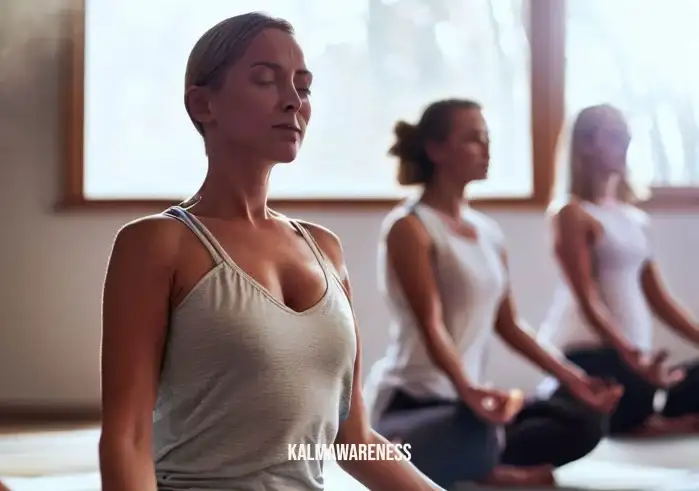
Embracing the Flow
To truly find your breath and experience a deeper connection with yourself and the world, one must learn to let go of the mind’s incessant chatter. We often fail to recognize the simplicity of living in the present moment, as our thoughts lead us astray. The solution? Let’s dive deeper into the concept of mindfulness.
When you attempt to find your breath, you are, in essence, trying to be fully present. To be fully conscious of the now, you must learn to let go of the mental noise and truly appreciate the nature of existence.
Mindfulness is not just about becoming aware of your breath or the sensations in your body. It’s also about becoming aware of your senses, your surroundings, your thoughts, and emotions. This awareness helps you become more attuned to the nuances of your experience, enabling you to engage in the world with an undivided attention.
One of the fascinating aspects of mindfulness is that it can be practiced in many ways, depending on your preferences and needs. One can engage in short morning meditations, micro-meditations throughout the day, or even turn routine tasks into mindful activities.
A great way to start this journey is to begin with breath. Observing the natural flow of your breath, the in and out, can be incredibly calming and grounding. After mastering this, you might consider incorporating other elements, such as mindful martial arts, into your routine.
However, practicing mindfulness doesn’t mean you won’t face difficulties. You might experience feeling hot during meditation, wonder if you can meditate after eating, or find it hard to meditate. There will always be distractions, and at times, it may feel like your mind is a storm of thoughts. However, each challenge is an opportunity to deepen your mindfulness practice.
Remember, it’s not about achieving a state of eternal peace or having a blank mind. It’s about learning to observe your thoughts without judgment, to recognize them for what they are—mere thoughts. It’s about realizing that our thoughts are not always our own and that we can choose not to engage with them.
In this sense, mindfulness is more about exploration than achievement. It’s about discovering your inner world, the patterns of your mind, and the depth of your being. And as you delve into this journey, you’ll find that mindfulness becomes more than just a practice. It becomes a way of life—a tool that helps you to live fully, to find your breath in every moment, and to reclaim your brain from the grips of mindless habituation.
So, are you ready to take the first step towards a more mindful existence? Start by just taking a moment to find your breath and observe the world around you. Remember, the journey of a thousand miles begins with a single step.
Next chapter: Unveiling the wonders of nature through mindful awareness.

The Journey Continues
Embracing the Power of Awareness
As we come to the end of this guide, let’s take a moment to look back and appreciate the journey. We’ve learned how to “find our breath” and to navigate the vast landscapes of our inner world. From this exploration, we’ve realized that mindfulness transcends techniques and postures – it’s an inward voyage leading us to our core essence.
“In mindfulness, every ordinary moment can become extraordinary.”
Let’s put this into practice and sense aware of our environment. Hear the symphony of the world around us – the birds’ songs, the leaves’ rustle, the cool breeze against the skin. This is the beauty of mindfulness. It turns our life into high-definition, inviting us to live in the present.
Integrating Mindfulness into Daily Life
With our expanding mindfulness practice, we’ve merged the thinking and observing mind. We now see that our thoughts, emotions, sensations, and experiences are not separate elements but parts of the same tapestry of existence.
Yet, our journey doesn’t stop here. With every passing moment, we can further cultivate our mindful awareness. As the principle of bell mindful mindfulness suggests, every moment can serve as a gentle reminder to return to the present.
- Try adding active pauses into your routine, deliberate moments of mindfulness amidst daily activities.
- Make an effort to aim for the moment, nurturing your present-moment awareness.
Even hobbies and daily tasks can become meditation. Practicing mindfulness while sewing or excelling under pressure in sports, each can serve as a unique chance to deepen your consciousness and truly be.
Cultivating Mindfulness: The Lifelong Journey
“To find your breath means to find your anchor in the stormy seas of life.”
Remember that true mindfulness practice is about staying calm and grounded, regardless of life’s tumultuous currents. Our thoughts ebb and flow like ocean waves, but our inner tranquility remains constant.
- Consider meditating before or after eating, integrating mindfulness into your daily meals.
- Take a 3-minute mindful breathing break during work hours.
As we conclude, remember that mindfulness isn’t a destination but a journey, one that involves waking up your mind and introducing the calm of mindfulness to everyone, even kids. Always stay present, stay mindful, and continually find your breath.
In the words of Diana Winston:
“Find your breath, find your life.”
Embrace the mindfulness journey and uncover new insights and peace. It’s not about reaching a destination but remaining engaged in the process. The power of mindfulness is within your reach – embrace it fully.
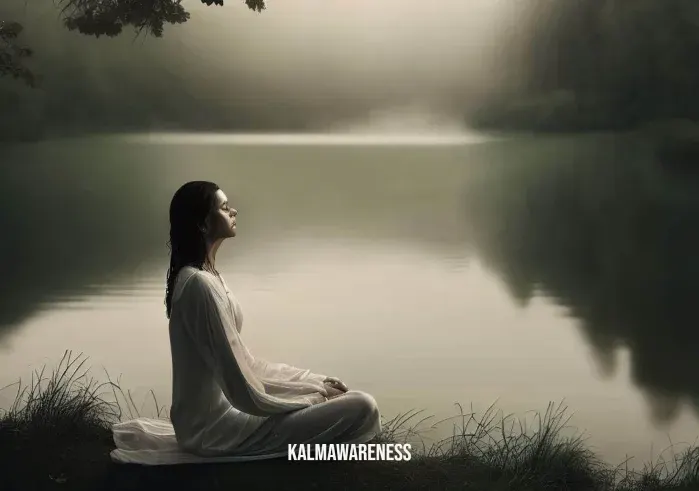
Bonus: The Fascinating, Lesser-known Aspects of Mindfulness
Congratulations on staying with us till the end! We’re sure you’ve found insights to help you deepen your mindfulness practice and more easily “find your breath”. As a reward for your dedication, we bring you some intriguing facts about mindfulness that aren’t widely known.
1. The Origin of the “Here and Now” Phrase
The phrase “here and now”, frequently used in mindfulness, was coined by Fritz Perls, the father of Gestalt therapy. Gestalt therapy aligns closely with mindfulness as it promotes whole (gestalt in German) awareness. Like mindfulness, it encourages us to stay present and to fully experience our emotions and sensations in the ‘here and now’. Aandacht, the Dutch word for attention, is another way to express this concept, emphasizing full presence and engagement in the moment.
2. Mindfulness and Sports
The application of mindfulness extends beyond stress relief or spiritual awakening; it’s highly prevalent in sports. Mindfulness in sports has to do with “letting the game come to you” rather than forcing things. This mindful approach in sports can make athletes more attuned to their bodies and the game, enhancing performance and pleasure in playing.
3. The Brain’s Reaction to Mindfulness
Studies have shown that mindful people show less activation in the default mode network (DMN), the brain network associated with mind-wandering. When the mind isn’t focused on the outside world or on a specific task, it defaults to the DMN, which can often lead to stress and anxiety. Mindfulness practice helps to quiet this network, leading to a calmer mind.
4. More Than Just Breathing
Yes, breathing exercises are a significant part of mindfulness. But did you know that there’s a whole gamut of mindfulness practices such as active pauses and micro-meditations? These practices invite you to engage fully with the present moment, whether you’re taking a sip of tea, feeling the wind on your skin, or even waiting at a traffic signal.
5. The Unseen Role of Sounds
In mindfulness, the role of sounds extends far beyond soft music or nature soundscapes used for relaxation. The concept of bee meditation, for instance, employs the humming sound made during exhalation to stimulate a sense of inner vibration and awaken one’s sense of hearing to a deeper level.
6. Martial Arts and Mindfulness
While we may associate mindfulness with stillness and quiet, it is also deeply interwoven with martial arts. The art of mindfulness in martial arts is about being fully present in each movement, understanding one’s body, and maintaining a mental balance even in the face of conflict.
7. You Can’t Be Good or Bad at Mindfulness
Despite common misconceptions, you can’t “excel” or “fail” at mindfulness. There’s no goal to achieve or state to arrive at. It’s a continual process of bringing your awareness back to your breath, your body, your feelings, and your current experience. Every moment of awareness is a moment of mindfulness.
Whether it’s implementing mindfulness into your daily activities or understanding the brain’s reaction to it, we hope these facts bring you a deeper appreciation for this ancient practice. Keep on finding your breath, finding your peace, and uncovering the rich tapestry of mindfulness.
